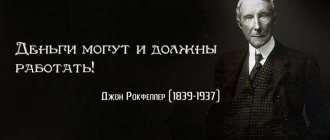I.A. Bunin. "Dark alleys". Retelling with quotes from the text.
The action of the novella takes place on one of the cold autumn days, on one of the Tula roads, at a postal station, in a private hotel, “ where one could relax or spend the night, have dinner or ask for a samovar.” the “slender old military man,” one of the heroes of the work, stopped
He entered the upper room, in which “it was warm, dry and tidy,” and “from behind the stove damper there was a sweet smell of cabbage soup.” Despite his age, the hero was still handsome and stately.
The hostess, the heroine of the work, came into the room.
Description of her appearance: “a dark-haired, also black-browed and also still beautiful woman beyond her age, looking like an elderly gypsy... light on her feet, but plump...”.
A dialogue ensued between the characters, from which the visitor learned that it was the owner of the hotel herself, that she was lonely, but not a widow, and loved to “manage.” The visitor praised: “And how clean and pleasant your place is.”
The heroine, having looked closely, recognized Nikolai Alekseevich , whom she had known since her youth, as she served in their house. She reminds him of herself (“ After all, she grew up under the masters, but she didn’t know how to behave decently”) . And only after these words did he recognize Nadezhda, whom he had not seen for 30 years (the hero was nearly 60 at the time of the meeting, and she was 48 years old).
Nikolai Alekseevich was excited by the meeting, blushed, became embarrassed, and the fatigue immediately went away. He began asking Nadezhda how she had lived all these years.
It turns out that immediately after Nikolai left the estate, the owners gave Nadezhda her freedom. She was not married (“ with such beauty,” as Nikolai Ivanovich noted), since she loved only him.
Nikolai Ivanovich begin to say that everything in life passes over the years: “Love, youth - everything, everything.” To this Nadezhda replied: “Everyone’s youth passes, but love is another matter.” She loved Nikolai all her life, although she understood that the old him was no longer there. She recalled their romance in her youth, when she affectionately called him “ Nikolenka” , and he read her poems about “dark alleys”; how he “heartlessly” told her that she even wanted to commit suicide out of resentment. Nadezhda still cannot forgive this.
Nikolai Alekseevich remembered what she was like: “ How hot, how beautiful!” What a figure, what eyes!” He spoke about his life: “...I have never been happy.” He loved his wife, but she cheated on him; he adored his son, pinned his hopes on him, but “he turned out to be a scoundrel, a spendthrift, an insolent person, without a heart, without honor, without a conscience...”
Nikolai Alekseevich realized that in Nadezhda he had lost “the most precious thing he had in life,” that only she truly loved him.
The hero moved on. According to the coachman, Nadezhda kept looking out the window. He said about her: “Baba is a mind. And everyone, they say, is getting richer. He gives money on interest”, that she is fair, but “steep”, “if you didn’t give it on time, you blame yourself.”
Nikolai Alekseevich realized that it was his fault for the separation from Nadezhda, that he needed to “blame himself.” And he remembered lines from a poem that he had once read to her: “The scarlet rose hips were blooming all around, there were dark linden alleys…”
But even now Nikolai Alekseevich could not imagine that this “innkeeper” was his wife, the mother of his children, the mistress of his St. Petersburg house. So strong were class prejudices in him. The short story ends with the words : “ And, closing his eyes, he shook his head .”
No, this man would never connect his life with a woman from a different social circle. And Nadezhda continued to love that one - her Nikolenka.
Retold by: Melnikova Vera Aleksandrovna.
History of creation
The history of writing the story “Dark Alleys” contains interesting facts that shed light on the author’s intention:
- The story “Dark Alleys” was created by Bunin as part of a large collection of stories. During this period of his life, Bunin lived in exile, having left Russia after the events of the seventeenth year. The disappointment and loss of the writer, which he felt after the death of the usual way of life of the pre-revolutionary Russian Empire, aggravated by a difficult life in a foreign country, found its way out on the pages of his collection.
- Bunin began working on the collection in 1937, and in 1938 he wrote the story “Dark Alleys.” The story was first published in New York in 1943 in the publication “New Land”. However, the main body of work was completed only in 1945.
- The epigraph to the story was a quote from L.N. Tolstoy: “Love does not understand death. Love is life." Each book in the series is dedicated to different facets of this feeling.
- While writing the work, the author suffered from loneliness and poverty, because pre-war and wartime in Europe were characterized by food shortages and rising prices for the most necessary products.
Direction and genre
The story “Dark Alleys” was created within the framework of the literary movement of realism. The writer strives for the most naturalistic recreation of real life. The images, speech and actions of the characters he created look as authentic and organic as possible. The reader can believe that the events told by Bunin could happen in real life.
In terms of genre, “Dark Alleys” is a story. The plot covers a short period of time and a minimal number of characters. And the absence of any specifics emphasizes the typicality of the situation described in this work.
main idea
The meaning in the story “Dark Alleys” can be clearly seen: this is Bunin’s longing for the past, his thoughts about his fate, the fate of his generation and the fate of Russia itself. His thoughts about missed happiness, about a life lived in vain and the vicissitudes of a cruel fate. Nadezhda is a reflection of everything that is popular, Russian, loyal and morally whole, and Nikolai is a weak and cowardly representative of the ruling noble class, who abandoned Russia in the guise of his beloved, but did not become happier or freer from this. It turned out that only she loved and accepted him for who he was. In the image of Nadezhda, Bunin sang his homeland - patient, meek, strong, but tormented, insulted by betrayal.
He also shows us the power of love and how frivolity in relationships can harm both the person himself and everyone around him. The main idea of the story “Dark Alleys” is a warning to those who are still walking along the dark alley of life in search of happiness: it may already be nearby, you just need to see it and not let it go.
The main characters and their characteristics
The characteristics of the heroes and the system of images in the story “Dark Alleys” found their place in the table:
| Nikolai Alekseevich | a man about sixty years old. Nobleman. Military. A slender old man with a stern but tired look. Faced with his past, he shows weakness and indecision, preferring to escape from it. In his youth, he became interested in a peasant woman, but left her without regret when he found a woman of his circle. But family life did not work out: his wife left him, and his son did not live up to expectations. |
| Hope | a beautiful forty-eight-year-old woman who looks like a gypsy. Endowed with strong feelings and long memory. She was never able to forget Nikolai and find her happiness, harboring a grudge against him for the rest of her life. She was once a simple peasant woman, but over time she was able to create her own business and develop her economy. An honest and sincere woman could not get married at the cost of deception, because she had loved one person all her life. |
Problems
The problems of the story “Dark Alleys” can also be increased in volume if you write to Litrecon what is missing.
- Treason
- in fact, Nikolai betrayed love, forgot his beloved, leaving her to the mercy of fate. By showing selfishness, the hero ruined the life of a girl who sincerely loved him all her life. - Despair
- life in Bunin’s works is shown as a difficult and unpleasant “alley” that brings suffering and trials to a person. None of the characters ended up being happy. Nikolai was disappointed in his family, and Nadezhda was disappointed in love. - Social inequality
. Nikolai remained a master for Nadezhda, which is why he left her so easily. He could not do this to a woman in his circle, because society would condemn him. It also prevented him from choosing Nadezhda, because a peasant woman is not a match for the master. - Revenge and generosity
. Nadezhda was never able to forgive her offender. His frivolity also hurts her in conversation. All this time he didn’t even remember the one he left, but she loved, suffered and could not let go of the memories of separation.
What does it teach?
The story “Dark Alleys” teaches us how important it is not to change love, not to play with it, because deceived love gives rise to despair, breaks a person’s mental health, leaving a painful wound on his soul. This is the moral of the work.
“Dark Alleys” makes us think about whether we are able to influence our destiny. They encourage us to think about the consequences of our actions, not to go through life frivolously and selfishly, because one day our actions will return to us in full.
Part two
Russia
The train stopped at a small station. The husband and wife looked out the window. The woman saw that her husband was sad. He admitted that 20 years ago he worked as a tutor not far from these places. The wife guessed that a girl was probably involved in this story. The man admitted that this was true. He had an affair with Marusya, whom everyone at home simply called Rusya. When the wife asked why her husband didn’t offer his hand in marriage to Ruse, he lied, saying that he simply didn’t want to and left. In fact, Rus''s mother did not allow them to be together. She ran to the young men with a pistol and confronted her daughter with a choice. The daughter chose her mother.
Gorgeous
An elderly official was once married to a beauty, but she died, leaving only a seven-year-old son. The man married a second time to a beauty who immediately disliked her stepson. At first the boy slept on a sofa in another room. But the beauty decided that the velvet could wear out. Therefore, the child was put to sleep on an old mattress, on the floor. The official did not dare to object to his beautiful wife; to please her, he began to pretend that he had never had a son. The boy, alone in the whole world, began to live independently, silently and unnoticed. He made and tidied up his bed, drew in a corner on a slate board and read the same book.
Stupid
The deacon's son studies at the seminary and comes to his parents for the holidays. On the first night he wakes up from a strong carnal desire. Not knowing what to do, the seminarian goes to the kitchen. The cook, nicknamed the fool, always slept there. Throughout the whole summer, the young man took advantage of the “fool,” and when he left, she gave birth to a boy.
A year later, the seminarian came back for vacation. Now he was ashamed of his relationship with the cook, although everyone in the family knew perfectly well that the “fool”’s child was his. The father called many guests and set the table to celebrate his son's entry into the academy. When the gramophone was started, the cook's son ran out into the middle of the room. He was a real freak, but cute when he smiled. The child began to dance, as absurdly as he could. The seminarian could not look at the child. Therefore, he ordered the cook to be kicked out of the house. She and her son went to walk around the world and live on alms.
Composition
The story is divided into three logical parts: the main character arrives at the inn, carries on a conversation and leaves.
- The first part contains exposition that shows us the main characters and tells us the backstory.
- The second part is reserved for the beginning and climax, the characters begin a conversation, remember the past, this revives seemingly long-dead feelings in them.
- In the third part there is a denouement, followed by a finale: the heroes interrupt the conversation and say goodbye forever.
Themes
The theme of the story “Dark Alleys” reflects the content of the entire Bunin cycle. The many-wise Litrekon will supplement this section if there is a need that needs to be written about in the comments:
- Love
in Bunin's works is represented by a powerful and dangerous force that rarely brings real happiness to a person, and most often brings him only new suffering and regrets. However, moments of passion are the best things that happen to people. It is the feelings that shine brightest in memory. - Fate
- this story shows us how a seemingly ordinary short-term romance can affect a person’s fate. Nikolai could not build his happiness on Nadezhda’s misfortune. His action turned into a mirror repetition: first he abandoned, then they abandoned him. - Moral choice
. The story is also filled with regret about the past, reflections on whether a person is capable of making choices on his life’s path, and whether he is able to make this choice correctly. Nikolai drives away the thought of what would have happened if he had married Nadezhda, because he is afraid to admit his mistake. - Nostalgia
. The heroes suffered greatly from love, but immersion in the past makes them discover happiness that is no longer there. It turned out that those first moments of passion and youth were the very happiness that the characters so lacked in the future.







